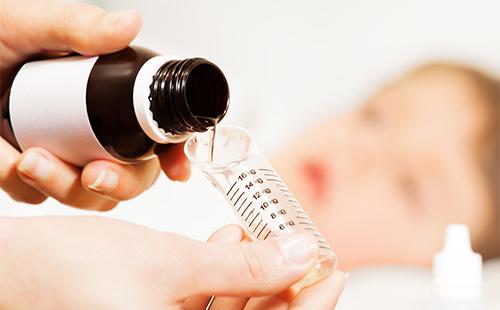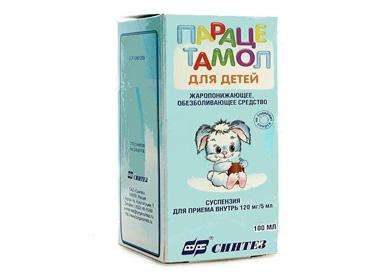The content of the article
The domestic name of the drug "Paracetamol" coincides with the active substance in its composition - one of the derivatives of aniline. At the same time, it is known in different countries under different names - “Tylenol” (USA), “Panadol” (Western Europe, but is also found under this “name” in the countries of the former USSR).
Paracetamol does not belong to narcotic analgesics. Its effects are explained by the ability to block cyclooxygenases (COX) - enzymes that are responsible for the synthesis of inflammatory mediator molecules - prostaglandins. In this case, according to doctors, "Paracetamol" acts mainly within the nervous tissue. Therefore, its anti-inflammatory effect is expressed rather weakly. But the increased activity of the center of thermoregulation in the brain and the pain sensitivity of the receptors of the central nervous system (CNS) it reduces well.
Indications for admission
Paracetamol is released in the form of:
- pills
- rectal suppositories;
- syrup (mainly for children);
- suspensions (mainly for children).
Typically, adults are prescribed pills, and children - one of the children's forms (they are interchangeable). As for rectal suppositories, their administration is advisable, if necessary, to relieve pain in the lower intestine or pelvic organs.
Current indications for the use of the drug relate to pain and fever, regardless of their cause. In particular, among the most common cases in which Paracetamol helps, it may be noted:
- a cold - both in the meaning of acute respiratory viral infections and in the value of exacerbation of chronic inflammation of the nasopharynx, tonsillitis without signs of viral / bacterial infection;
- toothache - in acute and chronic pulpitis, periodontal abscesses in the stage of suppuration, teething in children;
- menstrual pain - usually caused by intense contractions of the walls of the uterus, but able to increase with hormonal imbalances, adhesions in the ovaries and fallopian tubes, endometriosis;
- joint pain- age-related, provoked by osteochondrosis, senile arthritis / arthrosis or gout, as well as traumatic, including the rehabilitation period after surgery, dislocation, fracture;
- pain in hollow organs - in the kidneys (pelvis), in the urinary and gall bladder, urethra provoked by urinary and gallstone disease, urogenital infections, nephritis, pyelonephritis, cystitis, cholecystitis; stomach and intestinal pain caused by cramping.
Testimonials about Paracetamol also testify in his favor in treating him with a headache caused by fever, migraine, a jump in blood pressure or other reasons, with the exception of only concussion and traumatic brain injury. It helps with otitis media, sinusitis, conjunctivitis, hemorrhoids, bruises, neuralgia.
Limitations
Instructions for use "Paracetamol" now, after more than half a century of accumulated experience in its use, is drawn up in sufficient detail. And therefore, the list of contraindications and side effects indicated in it turns out to be long, gives the impression of a remedy too harmful to risk drinking it ourselves or, moreover, giving it to children.
In fact, this is what the instruction for any medicines should look like, including those whose action is currently described in just a couple of lines. This does not mean that they are better. Just because of their relative "youth" (the recent start of release), there is no data on the long-term consequences of their intake, overdose, interaction with new and old drugs or their combinations. In a certain sense, such seemingly harmless remedies are more dangerous than well-studied ones, because no one, including the doctor who has prescribed them, knows how their intake for each particular patient can end.
Therefore, too detailed instructions for old (those that are more than twenty years old) drugs should not be confused. Paracetamol really has contraindications and side effects. It is by no means harmless, especially with prolonged / frequent use, and is not suitable for the prevention of any pain or pathological conditions. But there are no more contraindications than any other analgesics or antipyretics and, most importantly, they are all known to medicine. That is why Paracetamol has been retaining its place on the Russian and European lists of vitally important medicines, the production of which is subsidized by the state, for many decades now.
Contraindications
The basis of contraindications for taking "Paracetamol" are all the same minimum requirements that medicine puts forward to any medicine, including herbal. Among them:
- individual intolerance - for example, in the form of an allergy, especially since Paracetamol is sometimes really able to provoke it;
- liver failure - and because the liver “processes” all substances entering the body, including drugs, and because “Paracetamol" by itself is harmful to liver cells;
- renal failure - for the same reasons as in the case of the liver.
Plus, the use of Paracetamol suppositories is prohibited if the rectal mucosa is inflamed or its integrity is compromised, as happens, for example, with cracks, fistulas, colorectal cancer, exacerbation of hemorrhoids. The answer of the medicine to the question whether Paracetamol can be given to children is obvious, since it allows the production of its childhood variants in the form of a sweet, aromatic suspension or syrup. Nevertheless, its administration during pregnancy, during lactation and in the first six months of the child's life should be prescribed with caution - in case of emergency and with short courses.
Side effects
Side effects from taking “Paracetamol" may be different, but most often there are complications given to them on the composition of the blood, liver and kidneys. In particular, prolonged use of Paracetamol or its overdose can lead to the development of:
- anemia and methemoglobinemia;
- renal colic, pyuria (impurities of pus in the urine);
- falling contractility of the heart;
- liver damage;
- nausea and pain in the area under the ribs.
Reception "Paracetamol" is unacceptable with alcoholism or within 24 hours before and after drinking alcohol. In addition, the drug enhances the effect of certain coagulants (coagulating factors necessary for hemophilia), emphasizes the effect of taking caffeine and Aspirin, antispasmodics like No-shpa.
What is the reason for such phenomena
In general, “Paracetamol” is well absorbed (within half an hour its action reaches a peak) and is rapidly excreted from the body (after a maximum of four hours, 50% of the dose taken will leave the body with urine). There are only two problems with it.
- Effect on the liver. Glutathione, the peptide needed to bind toxins, should be enough for the “processing" of the drug in the liver cells. With its deficiency or excess products of the transformation of "Paracetamol", those that remained free can block metabolic reactions in the liver cells, which leads to the death of liver cells.
- Effect on blood. Paracetamol is one of the derivatives of the toxic substance aniline for us - a component of many dyes, polyurethane. It is aniline that binds to hemoglobin when it enters the blood with a divalent glandular protein, turning it into trivalent - methemoglobin. The difference between divalent and trivalent hemoglobin is that the first is able to give the oxygen molecule to the tissues with which it binds when passing through the capillaries of the lungs, and the second does not. A certain percentage of methemoglobin is still formed in our body for various reasons, often not related to poisoning with aniline or its derivatives, including Paracetamol. However, normally it should be no more than 1-2% (a lethal outcome becomes inevitable even with 55-70% of red blood cells with trivalent hemoglobin). And taking Paracetamol often increases this index, increasing oxygen starvation of tissues throughout the body.

Instructions for use "Paracetamol": schemes and dosages
Given the possible side effects of the use of "Paracetamol", the maximum daily doses of the drug are:
- for adults - no more than 4 g of the drug per day;
- for children from a month to three years - no more than 60 mg of the drug per kilogram of body weight per day;
- for children from three to 12 years old - no more than 2 g of the drug per day.
In any case, the indicated daily volume should be divided into three to four approximately equal “servings”. You cannot take it at a time.
Paracetamol is absorbed more slowly and more uniformly in the rectum than in the duodenum. Therefore, children under three years of age are most often prescribed in the form of rectal suppositories, not syrup / suspension. The dosage of Paracetamol syrup in terms of daily doses per milliliter of the drug is as follows.
- Children from three months to a year. They need to take from 2.5 to 5 ml of syrup - depending on body weight (that is, a maximum of 120 mg of active substance).
- Children from one to five years old. Typically, body weight in this interval requires the administration of 5 to 10 ml of syrup (that is, up to 240 mg of paracetamol).
- Children from five to 12 years old. Most often, the daily rate of the drug for them ranges from 10-20 ml of Paracetamol syrup (that is, not more than 480 mg of the active substance).
- Adolescents and adults. They are advised to take no more than 40 ml of syrup (960 mg of paracetamol) per day.
Replacement Options
From the point of view of price, Paracetamol does not need analogues - it is already cheap because it is included in the list of vital means (their production or purchase is controlled at the state level) in most countries of the world.
But if it is contraindicated or not recommended, you can replace "Paracetamol" with any other pain medication or NSAIDs, for example, "Analgin”,“ Ibuprofen ”(also included in the number of mandatory purchases on behalf of the state),“ Aspirin ”(it can irritate the gastric mucosa and reduce blood coagulation),“ Nimesil ”,“ Ketanov ”.

